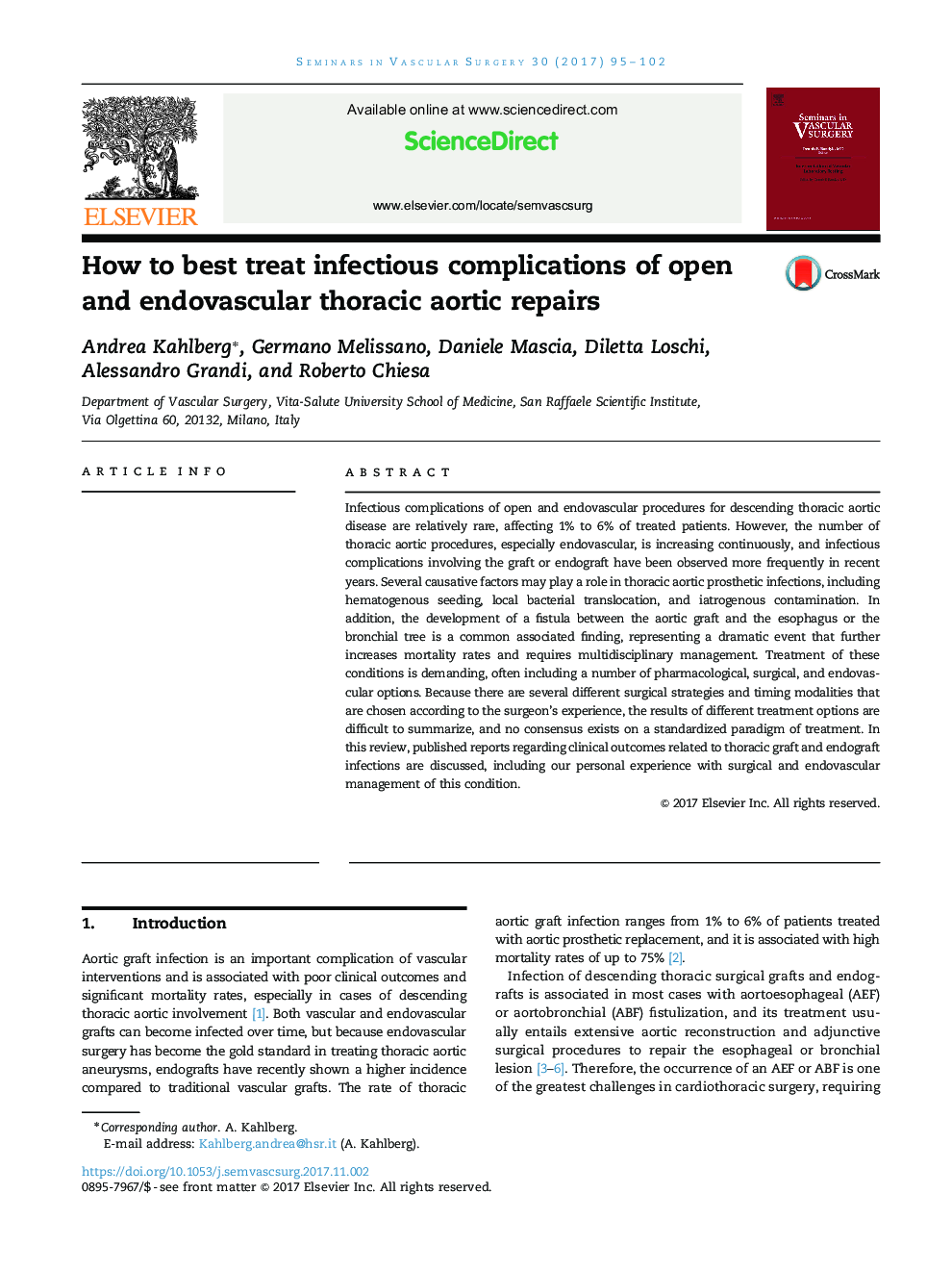| Article ID | Journal | Published Year | Pages | File Type |
|---|---|---|---|---|
| 8679239 | Seminars in Vascular Surgery | 2017 | 8 Pages |
Abstract
Infectious complications of open and endovascular procedures for descending thoracic aortic disease are relatively rare, affecting 1% to 6% of treated patients. However, the number of thoracic aortic procedures, especially endovascular, is increasing continuously, and infectious complications involving the graft or endograft have been observed more frequently in recent years. Several causative factors may play a role in thoracic aortic prosthetic infections, including hematogenous seeding, local bacterial translocation, and iatrogenous contamination. In addition, the development of a fistula between the aortic graft and the esophagus or the bronchial tree is a common associated finding, representing a dramatic event that further increases mortality rates and requires multidisciplinary management. Treatment of these conditions is demanding, often including a number of pharmacological, surgical, and endovascular options. Because there are several different surgical strategies and timing modalities that are chosen according to the surgeon's experience, the results of different treatment options are difficult to summarize, and no consensus exists on a standardized paradigm of treatment. In this review, published reports regarding clinical outcomes related to thoracic graft and endograft infections are discussed, including our personal experience with surgical and endovascular management of this condition.
Related Topics
Health Sciences
Medicine and Dentistry
Cardiology and Cardiovascular Medicine
Authors
Andrea Kahlberg, Germano Melissano, Daniele Mascia, Diletta Loschi, Alessandro Grandi, Roberto Chiesa,
